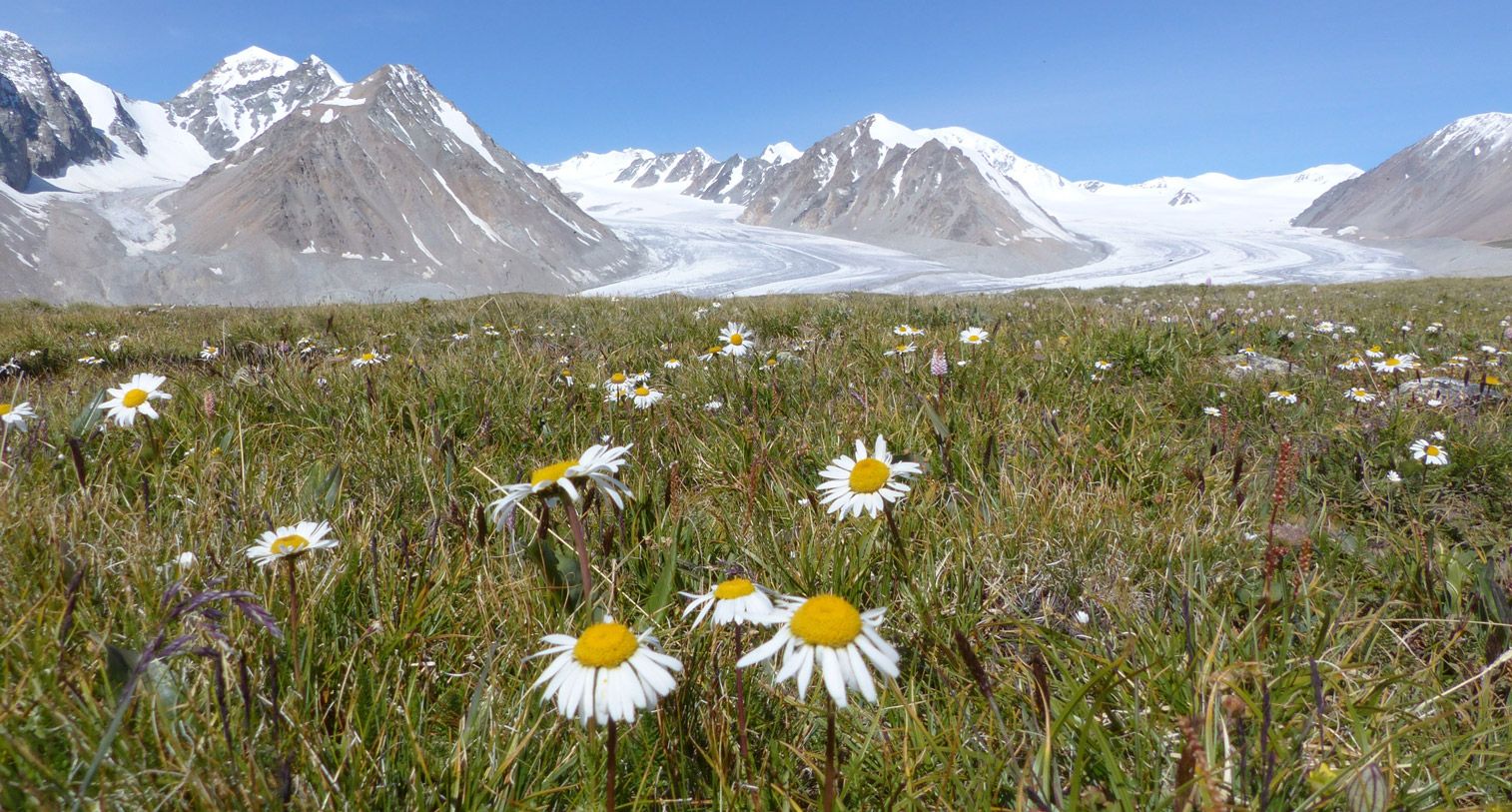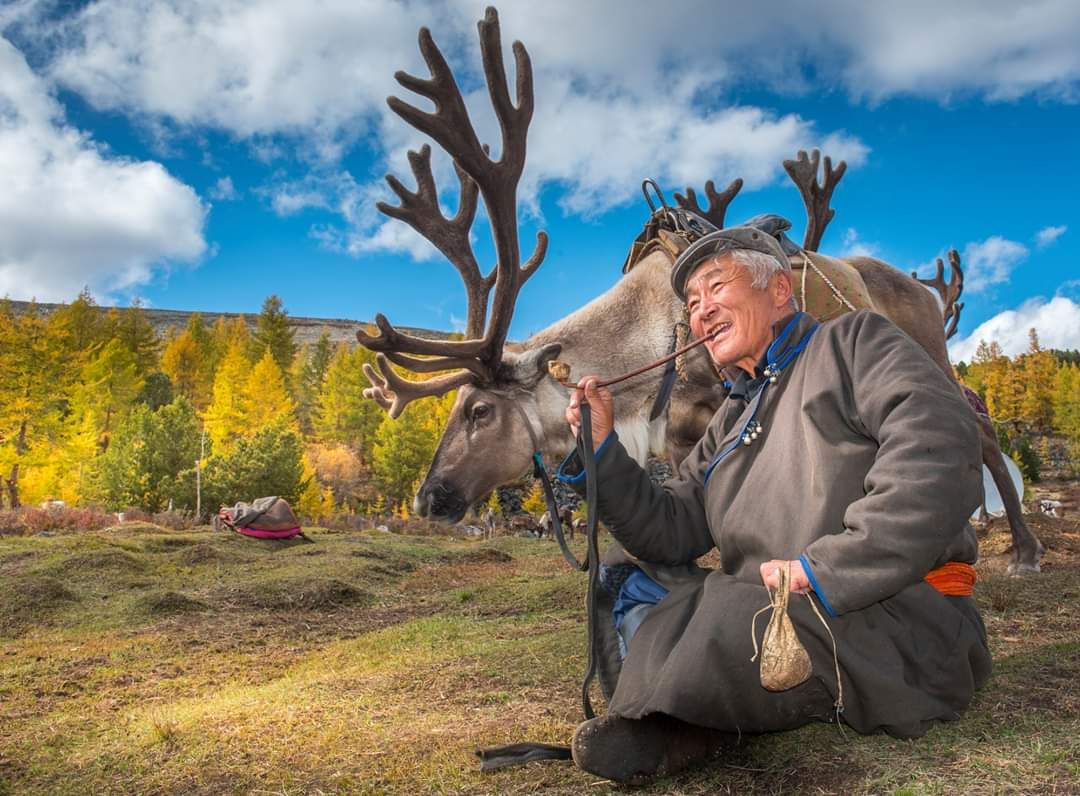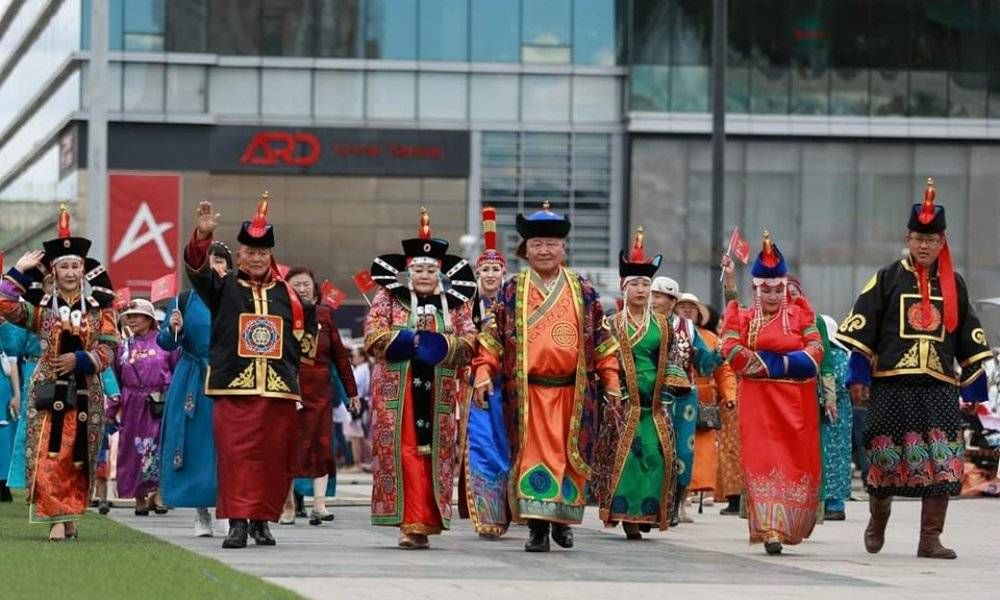Uushgiin Uvur Deer Stones (megaliths)
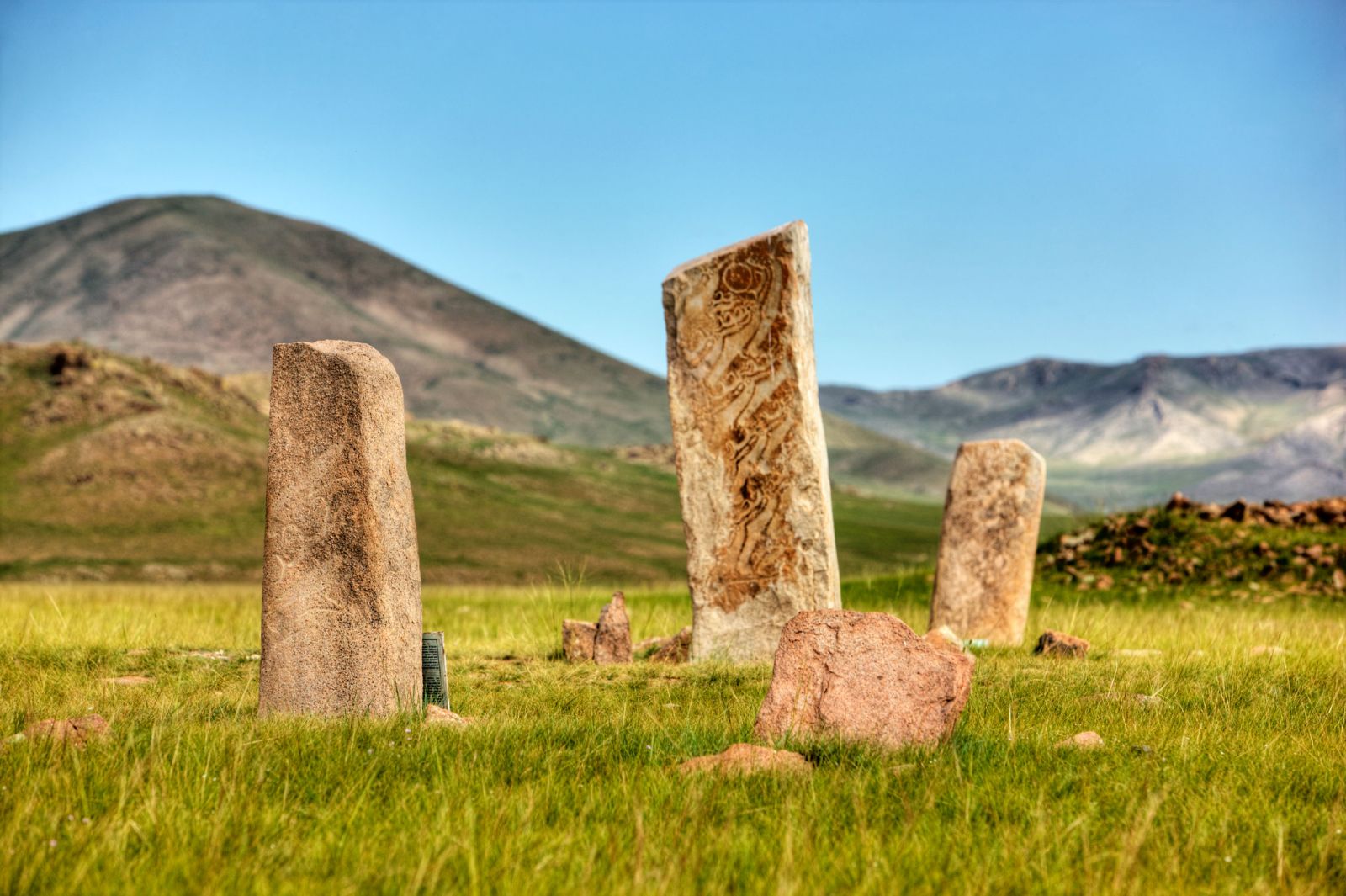
In a large valley between the mountains there are 14 deer stones. It’s rare to see so many of them in one place. These deer stones are made of granite and range between 2.3 and 4.8 meters in height, up to 1 meter wide, and 50cm thick. The deer's head usually faces the sky as ancient nomads thought of deer as heavenly animals. The front of the stone is decorated with images of the sun and moon followed by the image of the deer, and a wide belt-like decoration. Deer stones also include images of ancient belongings, such as bows and arrows, mirrors, pentahedron shields, tools, knives with round mirrorlike ornamentation, and unknown long weapons. Some rare stones have images of two deer opposite each other, facing the foundation.
Temple and Monastery
Gandan monastery.
The monastery was founded in 1727 and was badly damaged in 1937 during the Stalinist terror in Mongolia, and several buildings were even destroyed. The complex remained closed until 1944, only then was there a conditional re-use of the temples that had been preserved. Until the end of the Mongolian People's Republic, Gandan Monastery was the only monastery in all of Mongolia where religious ceremonies were allowed to take place under the control of the secret police. But today it has become a peaceful and beloved place for Mongolians. It's always something special when you go there.
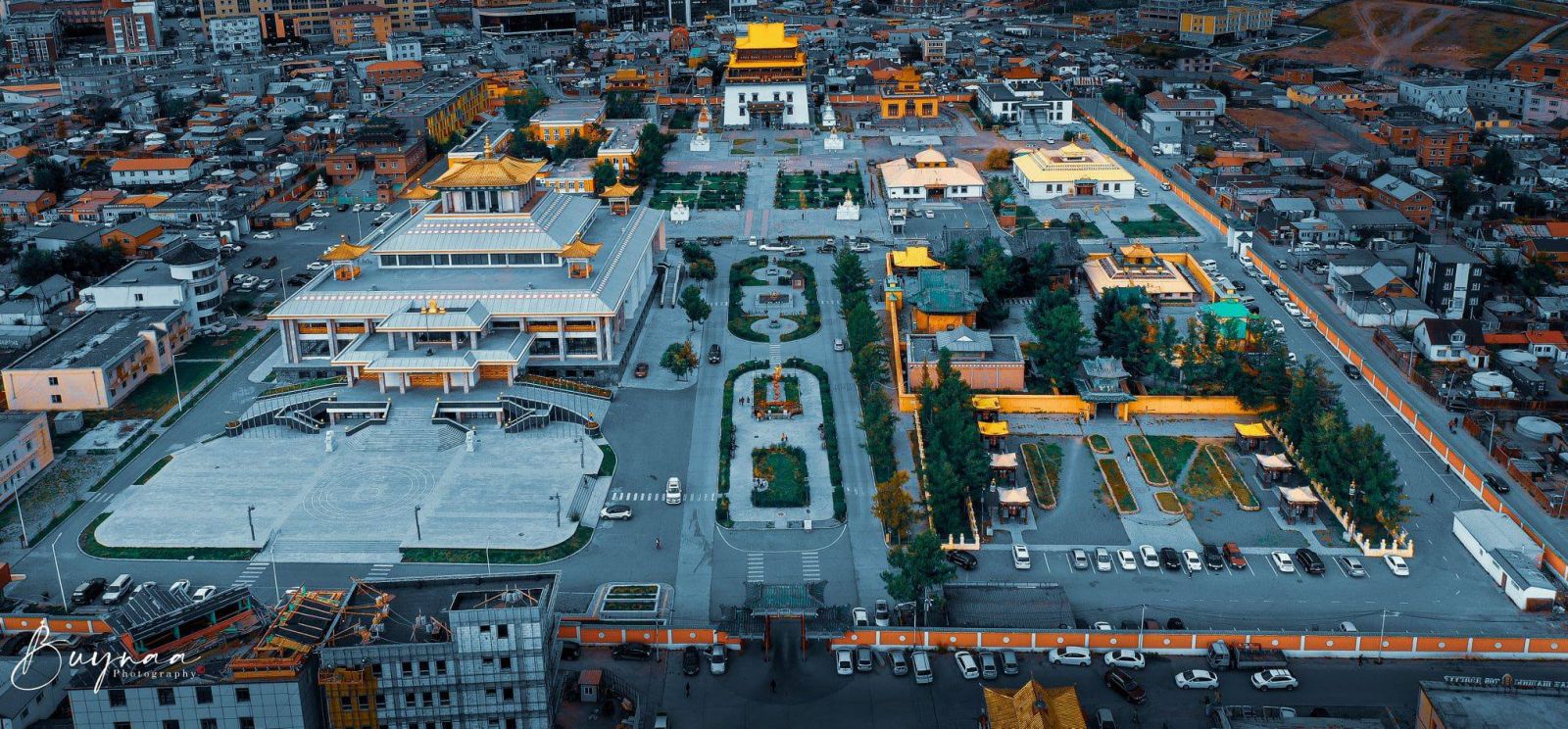
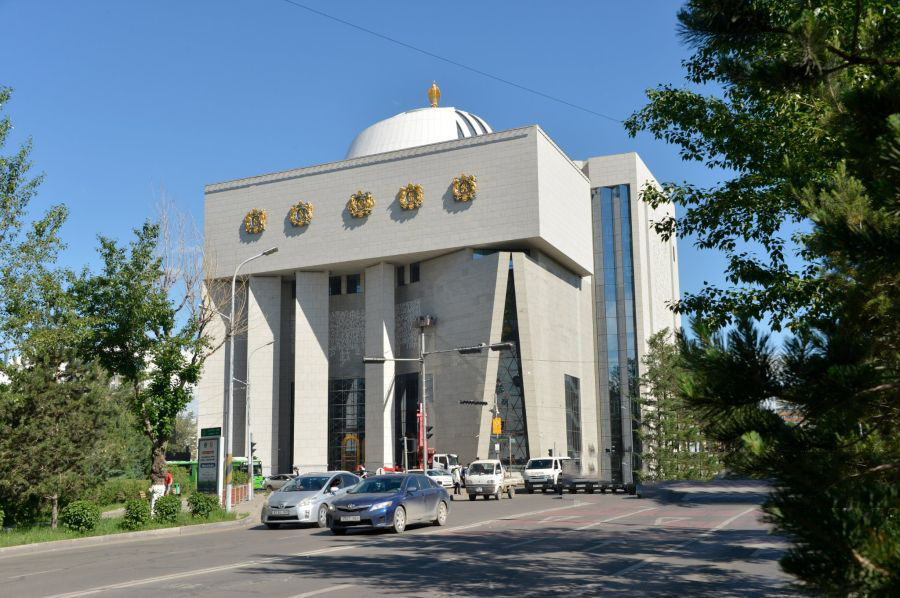
Chinggis Khan Museum.
The museum places visitors in 13th century Mongolia to understand Chinggis Khaan, the Emporer and aristocracy. In addition to focusing on the person of Chinggis Khaan, the museum immerses visitors in the understanding of peace and culture of the past, current, and future Mongolia, including the culture of horses, religion, landscape, and military history.
Monastery Amarbayasgalant

Amarbayasgalant Monastery or the "Monastery of Tranquil Felicity", is one of the three largest Buddhist monastic centers in Mongolia. The monastery complex is located in the Iven Valley near the Selenge River, at the foot of Mount Büren-Khaan in Baruunbüren sum of Selenge Province in northern Mongolia.
The monastery was established and funded by order of the Yongzheng Emperor of Qing China to serve as a final resting place for Zanabazar (1635–1723), the first Jebtsundamba Khutuktu, or spiritual head of Tibetan Buddhism for the Khalkha in Outer Mongolia and a spiritual mentor to both emperors' ancestor, the Kangxi Emperor. Tradition holds that while searching for an appropriate site to build the monastery, the exploratory group came across two young boys, Amar and Bayasgalant, playing on the steppe.
They were inspired to build the monastery on that very spot and to name it after the two children, Amar-Bayasgalant. More likely, the location was chosen because it stood at the place where the lama's traveling Da Khuree (his mobile monastery and prime residence) was encamped at the moment of his death. Construction took place between 1727 and 1736 and Zanabazar's remains were transferred there in 1779.
Amarbayasgalant monastery is dedicated to Zanabazar's main tutelary deity, Maitreya. Unlike Erdene Zuu Monastery, which is an ensemble of temple halls of different styles, Amarbayasgalant shows great stylistic unity. The overriding style is Chinese, with some Mongol and Tibetan influence. The monastery resembles Yongzheng's own palace Yonghegong in Beijing (converted by his son the Qianlong Emperor into a Buddhist monastery). Originally consisting of over 40 temples, the monastery was laid out in a symmetrical pattern, with the main buildings succeeding one another along a north–south axis, while the secondary buildings are laid out on parallel sides.
Amarbayasgalant was one of the very few monasteries to have partly escaped destruction during the Stalinist purges of 1937, after which only the buildings of the central section remained. Many of the monks were executed by the country's Communist regime and the monastery's artifacts, including thangkas, statues, and manuscripts were looted, although some were hidden until more fortunate times.
Today, only 28 temples remain. Restoration work began in 1988 with funds provided by UNESCO and private sources and some of the new statuary was commissioned in New Delhi, India.
